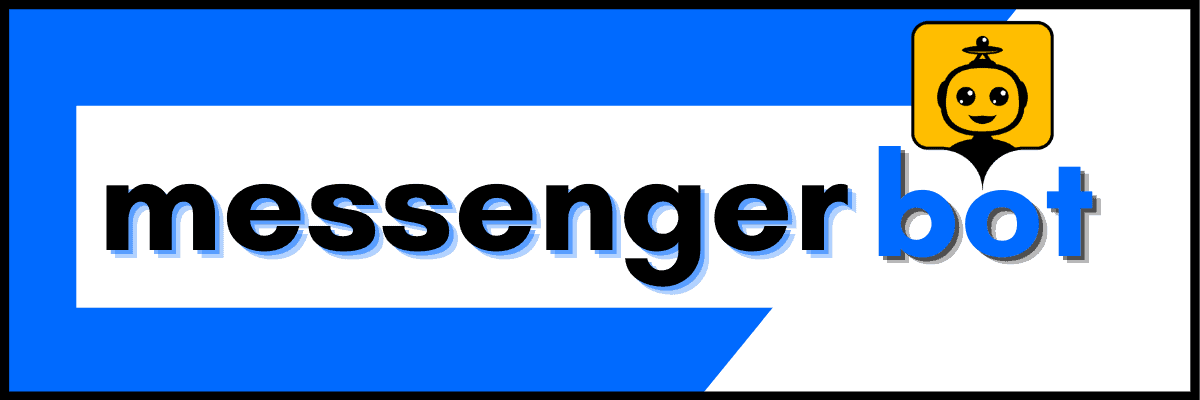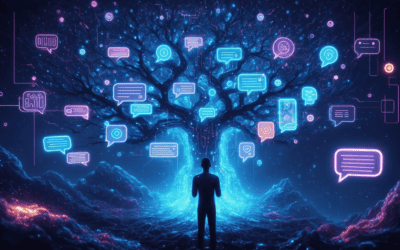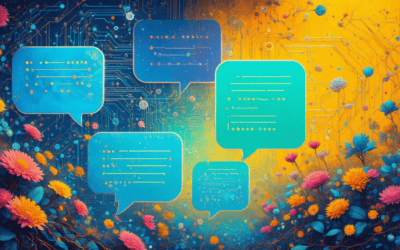In today’s digital landscape, mastering chatbot development is not just a trend; it’s a necessity for anyone looking to enhance their skills in artificial intelligence and customer engagement. This ultimate guide to a chatbot course will provide you with valuable insights into the world of chatbots, from understanding the different types available to exploring the best platforms for learning. Whether you’re curious about where to find free chatbot courses or eager to discover the essential skills needed to become a chatbot expert, this article has you covered. We will delve into key topics such as salary expectations for chatbot builders, effective training methods, and the timeframes involved in learning chatbot development. By the end of this guide, you’ll be equipped with the knowledge and resources to embark on your journey in chatbot development, opening doors to exciting career opportunities in this rapidly evolving field.
Where can I learn chatbot?
To learn about chatbots, consider enrolling in comprehensive online courses and programs that cover various aspects of chatbot development and design. Here are some recommended platforms and resources:
Exploring Free Chatbot Courses
- edX: edX offers a variety of courses on chatbots, including introductory classes that cover the fundamentals of chatbot technology, natural language processing (NLP), and user experience design. Advanced courses may focus on creating chatbots using programming languages like Python or JavaScript, as well as no-code platforms.
- Coursera: This platform features courses from top universities and companies. Look for courses like “Building Conversational Experiences with Dialogflow” or “AI for Everyone” by Andrew Ng, which provide insights into chatbot functionality and design principles.
- Udacity: Udacity’s Nanodegree programs, such as the “AI Programming with Python” or “AI for Business Leaders,” include modules on chatbot development, emphasizing practical skills and real-world applications.
- Codecademy: For those interested in hands-on coding experience, Codecademy offers interactive courses on Python and JavaScript, which are essential for building custom chatbots.
- YouTube Tutorials: Channels dedicated to programming and AI often have free tutorials on chatbot creation, covering both coding and no-code solutions.
- Books and eBooks: Titles such as “Chatbots: 101” and “Designing Bots: Creating Conversational Experiences” provide in-depth knowledge and practical tips for aspiring chatbot developers.
By leveraging these resources, you can gain a solid understanding of chatbot technology, design principles, and practical implementation strategies, positioning yourself well in this rapidly evolving field.
Top Online Platforms for Chatbot Learning
In addition to free courses, several online platforms specialize in chatbot learning, providing structured programs and certifications:
- Messenger Bot Development: If you’re specifically interested in creating chatbots for platforms like Facebook Messenger, consider resources that focus on Messenger Bot development. Facebook’s own documentation provides a detailed guide on how to build and deploy Messenger Bots, including best practices for user engagement.
- Brain Pod AI: Explore the offerings at Brain Pod AI, which provides various AI solutions, including chatbot development tools that can enhance your learning experience.
- Online Learning Communities: Platforms like Stack Overflow and Reddit have dedicated communities where you can ask questions, share knowledge, and learn from experienced developers in the chatbot space.
Utilizing these platforms will not only enhance your skills but also keep you updated with the latest trends in chatbot technology.

What are the 4 types of chatbots?
Understanding the different types of chatbots is essential for anyone looking to delve into chatbot development or enhance their digital communication strategies. Each type of chatbot serves unique functions and is suited for various applications. Here’s a closer look at the four primary types of chatbots:
Understanding Rule-Based Chatbots
Rule-based chatbots, also known as keyword recognition chatbots, operate on a predefined set of rules. They analyze user inputs based on specific keywords and respond accordingly. While these chatbots are effective for straightforward inquiries, they can struggle with complex or nuanced questions. Commonly used in customer service applications, they guide users through a series of choices to find the information they need. This makes them user-friendly and efficient for handling basic queries.
The Rise of AI-Powered Chatbots
AI-powered chatbots, which include Natural Language Processing (NLP) bots and machine learning bots, represent a significant advancement in chatbot technology. NLP bots utilize advanced algorithms to understand and interpret human language, allowing for more natural conversations. They learn from interactions to improve their responses over time, making them particularly useful in applications requiring a deeper understanding of user intent. On the other hand, machine learning bots analyze user interactions to enhance their performance, adapting to user preferences and providing more accurate responses. This type of chatbot is often employed in sophisticated customer service and personal assistant applications.
For those interested in exploring chatbot development further, consider taking a chatbot course free to gain foundational knowledge and practical skills. Additionally, platforms like Brain Pod AI offer innovative solutions and resources for building advanced chatbots.
What is the salary of a chatbot builder?
The salary of a chatbot builder, also known as a chatbot developer, varies based on experience, location, and the complexity of the projects they handle. As of 2025, the estimated total pay for a chatbot developer in the United States is approximately $87,088 per year, with an average base salary of around $80,437 per year. This data is derived from Glassdoor’s proprietary Total Pay Estimate model, which aggregates salary information from users across the country.
Salary Expectations in Chatbot Development
Chatbot developers can expect varying salaries based on several factors:
- Experience Level: Entry-level chatbot developers can expect to earn between $60,000 and $75,000 annually, while those with several years of experience can earn upwards of $100,000 or more.
- Location: Salaries can vary significantly by region. For example, developers in tech hubs like San Francisco or New York City may earn higher salaries due to the cost of living and demand for tech talent.
- Industry: Chatbot developers working in industries such as finance, healthcare, or e-commerce may command higher salaries due to the specialized knowledge required.
- Skill Set: Proficiency in programming languages (such as Python, JavaScript, or C#), experience with AI and machine learning, and familiarity with platforms like Messenger Bot can enhance a developer’s earning potential.
Factors Influencing Chatbot Builder Salaries
Several key factors influence the salary of chatbot builders:
- Market Demand: As businesses increasingly adopt chatbots for customer service and engagement, the demand for skilled developers continues to rise, potentially driving salaries higher.
- Project Complexity: Developers handling more complex projects, such as those involving advanced AI functionalities or integrations with multiple platforms, may command higher pay.
- Certifications and Education: Holding relevant certifications or degrees in computer science or software engineering can also positively impact salary expectations.
For further insights, refer to sources like the U.S. Bureau of Labor Statistics (BLS) and industry salary surveys from reputable tech organizations.
How can I train my own chatbot?
Training your own chatbot involves a systematic approach to ensure it meets user needs effectively. Here’s a step-by-step guide to help you through the process:
Step-by-Step Guide to Training a Chatbot
1. **Determine the Chatbot Use Cases**: Identify specific scenarios where your chatbot will add value, such as customer support, lead generation, or information retrieval. This clarity will guide the design and functionality of your chatbot.
2. **Define User Intent**: Understand what users are trying to achieve when they interact with your chatbot. Utilize frameworks like the Intent Classification Model to categorize user intents effectively.
3. **Analyze Conversation History**: Review past interactions to identify common queries and pain points. Tools like Google Analytics can help track user behavior and preferences, providing insights into what users typically ask.
4. **Generate Variations of User Queries**: Create diverse examples of how users might phrase their questions. This can include synonyms, slang, and different sentence structures to ensure your chatbot understands a wide range of inputs.
5. **Ensure Keywords Match Intent**: Optimize your chatbot’s responses by incorporating relevant keywords that align with user intent. This not only improves understanding but also enhances the chatbot’s ability to provide accurate answers.
6. **Teach Your Team Members How to Train Bots**: Provide training sessions for your team on best practices for chatbot training. This includes understanding natural language processing (NLP) and using platforms like Dialogflow or Microsoft Bot Framework.
7. **Give Your Chatbot a Personality**: Develop a consistent tone and style for your chatbot that reflects your brand. This can enhance user engagement and make interactions feel more human-like.
8. **Revise and Improve Regularly**: Continuously monitor chatbot performance and user feedback. Use A/B testing to experiment with different responses and improve the chatbot’s effectiveness over time.
For practical implementation, consider using platforms like Messenger Bot, which allows for easy integration and training of chatbots within social media environments. By leveraging these tools, you can streamline the training process and enhance user interactions.
Tools and Resources for Effective Chatbot Training
To successfully train your chatbot, utilizing the right tools and resources is crucial. Here are some recommended options:
– **Messenger Bot**: This platform provides comprehensive features for chatbot training, including automated responses and workflow automation. You can start your journey with a free trial to explore its capabilities.
– **Dialogflow**: A powerful tool for building conversational interfaces, Dialogflow offers robust NLP capabilities that can help you define user intents and manage conversation flows effectively.
– **Microsoft Bot Framework**: This framework provides a rich set of tools for developing and deploying chatbots across various channels, making it a versatile option for businesses.
– **Brain Pod AI**: For those looking for advanced AI solutions, Brain Pod AI offers a range of services, including an AI chat assistant that can enhance your chatbot’s functionality.
By leveraging these tools and following the outlined steps, you can effectively train your chatbot to meet user expectations and improve engagement.

How Long Does It Take to Learn Chatbot?
The time it takes to learn how to create a chatbot can vary significantly based on several factors, including your prior programming experience, the complexity of the chatbot, and the tools you choose to use. Here’s a breakdown of the learning timeline:
- Basic Understanding (1-2 weeks): If you are new to programming, you may need to start with foundational concepts. Online platforms like Codecademy or freeCodeCamp offer introductory courses in programming languages such as Python or JavaScript, which are commonly used in chatbot development.
- Familiarization with Chatbot Frameworks (2-4 weeks): Once you have a grasp of basic programming, you can begin to explore chatbot frameworks such as Microsoft Bot Framework, Dialogflow, or Rasa. Each of these platforms has extensive documentation and tutorials that can help you get started quickly.
- Building a Simple Chatbot (2-6 weeks): After familiarizing yourself with the frameworks, you can start building a simple chatbot. This process involves designing conversation flows, integrating APIs, and testing the bot. Depending on the complexity, this stage can take anywhere from two to six weeks.
- Advanced Features and Optimization (4-8 weeks): To enhance your chatbot with advanced features like natural language processing (NLP) and machine learning capabilities, you may need additional time to learn these concepts. This could involve studying libraries such as TensorFlow or spaCy for NLP.
- Deployment and Maintenance (1-2 weeks): Finally, deploying your chatbot on platforms like Facebook Messenger or Slack requires understanding the specific requirements of these platforms. Maintenance and updates will be ongoing tasks as you gather user feedback and improve the bot.
In total, you can expect to invest anywhere from 10 weeks to several months to become proficient in chatbot development, depending on your starting point and the complexity of the chatbot you wish to create. For further reading, consider resources from reputable sites like the Chatbot Magazine and the official documentation of the frameworks mentioned.
Timeframes for Learning Chatbot Development
Understanding the timeframes for learning chatbot development is crucial for setting realistic expectations. Here’s a concise overview:
- Beginner Level: 1-2 weeks for basic programming concepts.
- Intermediate Level: 2-4 weeks to familiarize with chatbot frameworks.
- Practical Application: 2-6 weeks to build a simple chatbot.
- Advanced Learning: 4-8 weeks for advanced features and optimization.
- Deployment: 1-2 weeks for deployment and maintenance.
By following a structured learning path, you can efficiently navigate through the complexities of chatbot development and enhance your skills effectively.
Accelerated Learning Paths for Chatbot Courses
For those looking to expedite their learning process, consider enrolling in a chatbot course free that offers intensive training modules. These courses often provide:
- Hands-on projects to reinforce learning.
- Access to expert instructors for real-time feedback.
- Resources and tools that streamline the learning process.
Utilizing these accelerated learning paths can significantly reduce the time required to become proficient in chatbot development, allowing you to quickly implement your skills in real-world applications.
How to Become a Chatbot Expert?
To become a chatbot expert, follow these comprehensive steps that encompass essential knowledge areas, practical skills, and industry insights:
- Understand the Fundamentals of AI and NLP: Gain a solid foundation in artificial intelligence (AI) and natural language processing (NLP). These technologies are crucial for creating effective chatbots. Resources such as “Artificial Intelligence: A Guide to Intelligent Systems” by Michael Negnevitsky and online courses from platforms like Coursera or edX can provide valuable insights.
- Learn Programming Languages: Familiarize yourself with programming languages commonly used in chatbot development, such as Python, JavaScript, and Java. Python, in particular, is favored for its simplicity and extensive libraries for AI and NLP, including NLTK and SpaCy.
- Explore Chatbot Development Frameworks: Get hands-on experience with popular chatbot development frameworks like Microsoft Bot Framework, Google Dialogflow, and Rasa. These platforms offer tools and resources to streamline the development process. For instance, Dialogflow integrates seamlessly with Google Assistant and Messenger Bot, allowing for broader deployment options.
- Study User Experience (UX) Design: Understand the principles of UX design to create chatbots that provide a seamless user experience. This includes learning about conversation design, user intent recognition, and how to structure dialogues effectively. Resources like “Designing Bots: Creating Conversational Experiences” by Amir Shevat can be beneficial.
- Practice Building Chatbots: Start building your own chatbots to apply your knowledge practically. Use platforms like Chatfuel or ManyChat for simple bots, and progress to more complex systems using the aforementioned frameworks. Document your projects to showcase your skills in a portfolio.
- Stay Updated with Industry Trends: Follow industry blogs, attend webinars, and participate in forums to keep abreast of the latest trends in chatbot technology. Websites like Chatbots Magazine and the AI section of Medium provide valuable insights and case studies.
- Network with Professionals: Join communities and networks of chatbot developers and AI enthusiasts. Platforms like LinkedIn, Reddit, and specialized forums can help you connect with experts, share knowledge, and find mentorship opportunities.
- Consider Certifications: Pursue certifications in AI and chatbot development to enhance your credibility. Certifications from recognized institutions can demonstrate your expertise to potential employers.
Essential Skills for Chatbot Experts
To excel as a chatbot expert, you should develop the following essential skills:
- Technical Proficiency: Master programming languages and frameworks relevant to chatbot development.
- Analytical Thinking: Ability to analyze user interactions and improve chatbot responses based on data.
- Communication Skills: Strong verbal and written communication skills to design effective conversational flows.
- Problem-Solving: Ability to troubleshoot issues and optimize chatbot performance.
- Creativity: Innovate engaging and user-friendly chatbot experiences.
Recommended Chatbot Courses on Udemy and IBM
For those looking to enhance their skills through structured learning, consider these recommended courses:
- Udemy Chatbot Courses: A variety of courses covering different aspects of chatbot development, from beginner to advanced levels.
- IBM AI Solutions: Explore IBM’s offerings for AI and chatbot development, including tutorials and resources.
Chatbot Training Job Opportunities
As the demand for chatbots continues to rise, so do the job opportunities in chatbot training and development. Companies are increasingly recognizing the value of chatbots in enhancing customer engagement and streamlining operations. This section explores the various career paths available in chatbot development and how to build a strong portfolio to secure these roles.
Career Paths in Chatbot Development
There are several career paths within the realm of chatbot development, each catering to different skill sets and interests:
- Chatbot Developer: Focuses on designing and coding chatbots, often requiring proficiency in programming languages such as Python or JavaScript. Developers work on integrating AI and machine learning to create intelligent bots.
- Conversational Designer: Specializes in crafting the dialogue and user experience of chatbots. This role requires a deep understanding of user behavior and effective communication strategies.
- AI Trainer: Responsible for training chatbots to improve their responses and interactions. This role involves analyzing user interactions and refining the bot’s algorithms.
- Product Manager: Oversees the development and deployment of chatbot solutions, ensuring they meet business objectives and user needs.
- Marketing Specialist: Utilizes chatbots for lead generation and customer engagement, requiring knowledge of digital marketing strategies and tools.
These roles often require a combination of technical skills, creativity, and an understanding of user experience. As companies like Brain Pod AI and others continue to innovate in AI technology, the opportunities for chatbot professionals are expanding rapidly.
Building a Portfolio for Chatbot Roles
Creating a strong portfolio is essential for anyone looking to enter the chatbot development field. Here are some key steps to consider:
- Showcase Projects: Include examples of chatbots you have developed or contributed to. Highlight the technologies used and the problems solved.
- Document Your Process: Provide insights into your development process, including challenges faced and how you overcame them. This demonstrates your problem-solving skills.
- Include User Feedback: If possible, gather testimonials or feedback from users who interacted with your chatbots. Positive user experiences can significantly enhance your portfolio.
- Continuous Learning: Stay updated with the latest trends in chatbot technology and AI. Consider taking a chatbot course free to enhance your skills and knowledge.
By following these steps, you can create a compelling portfolio that showcases your expertise and attracts potential employers in the growing field of chatbot development.




